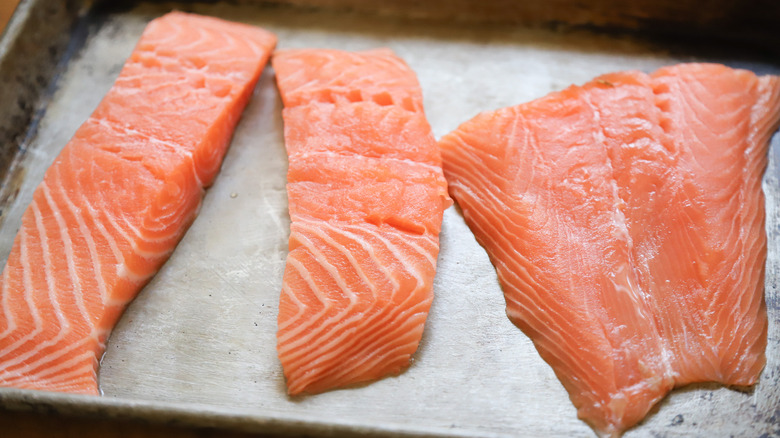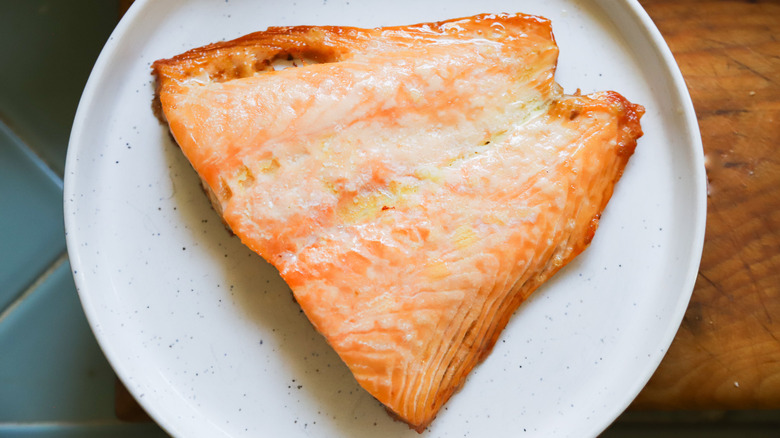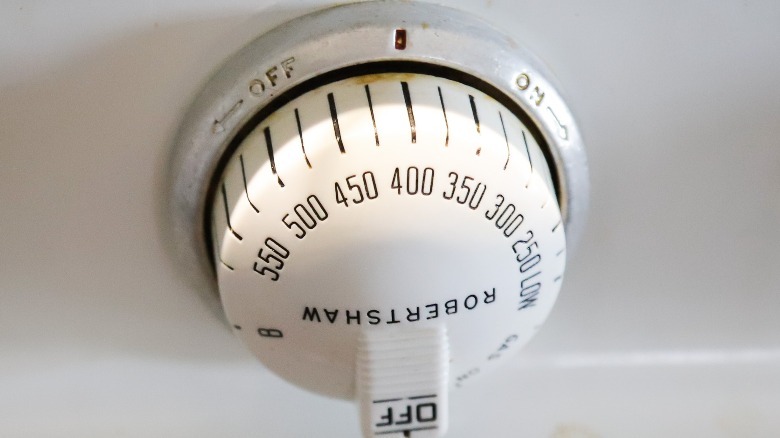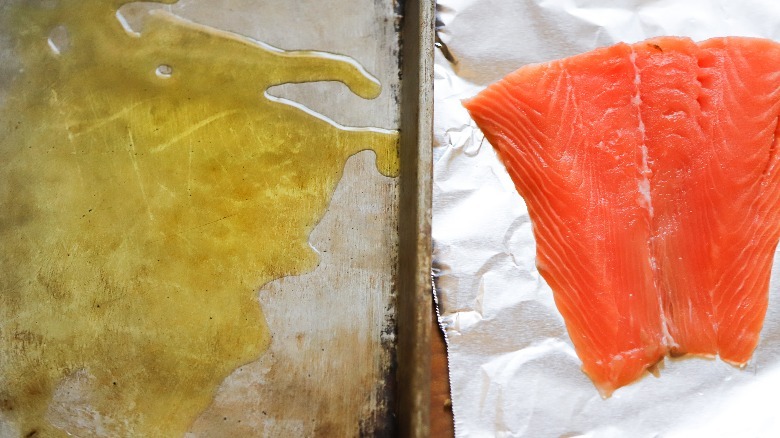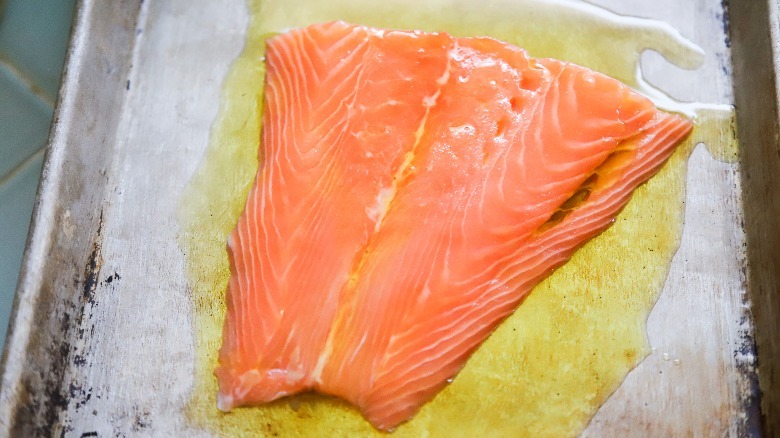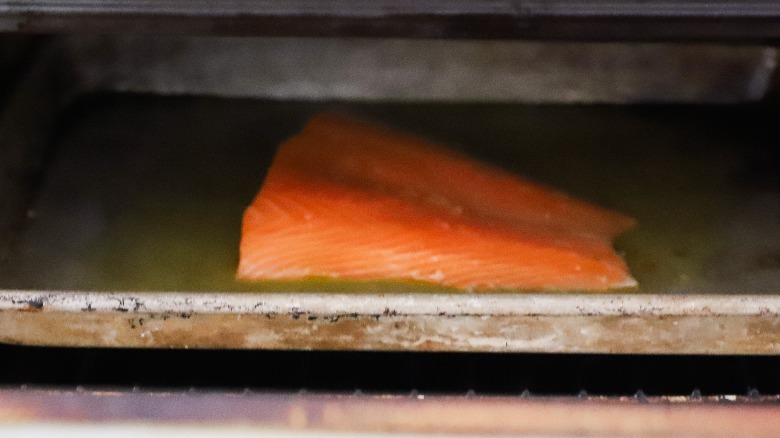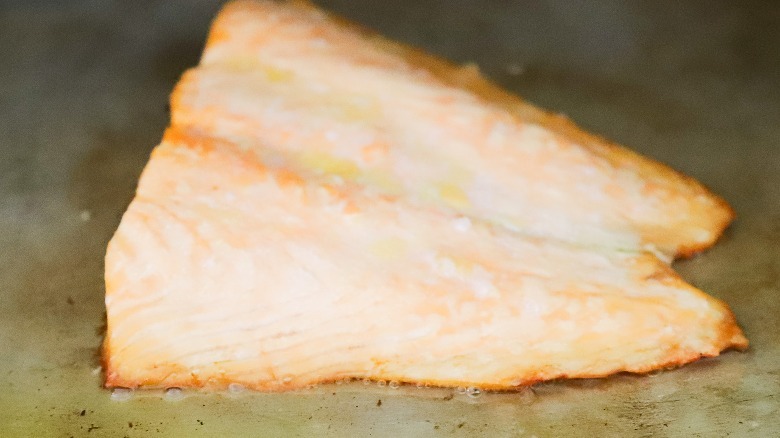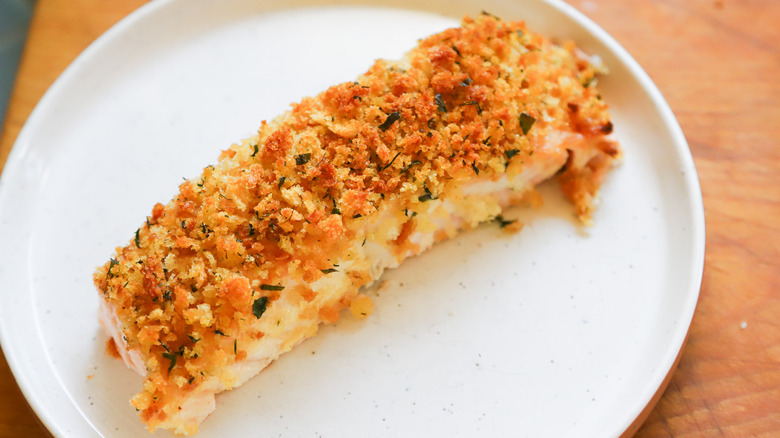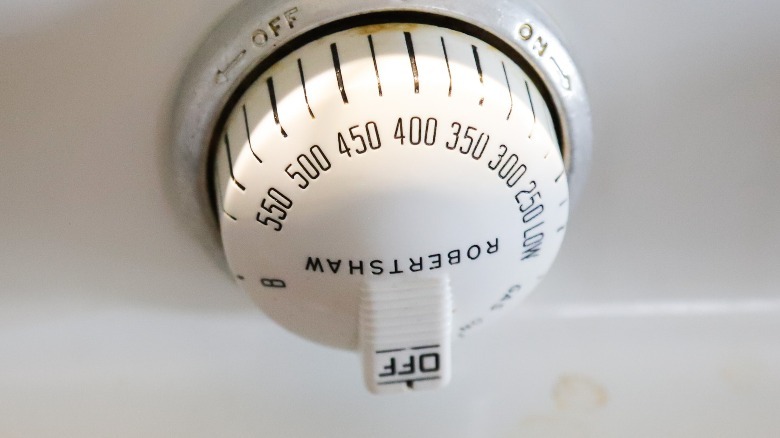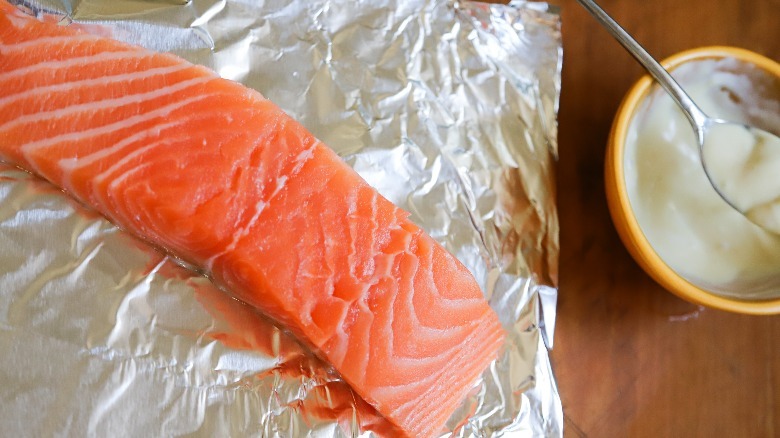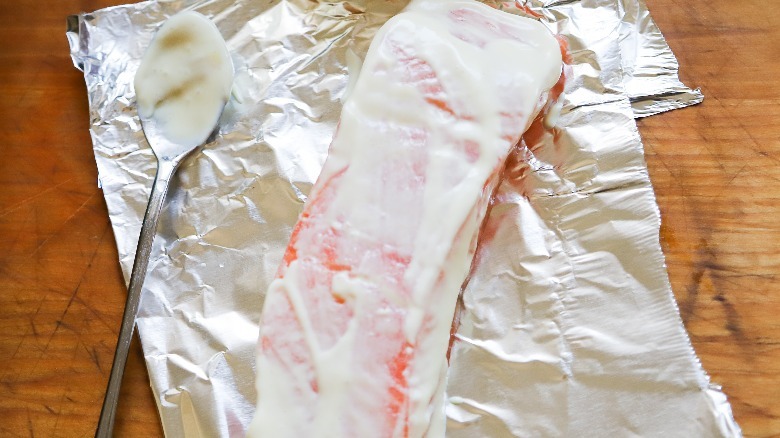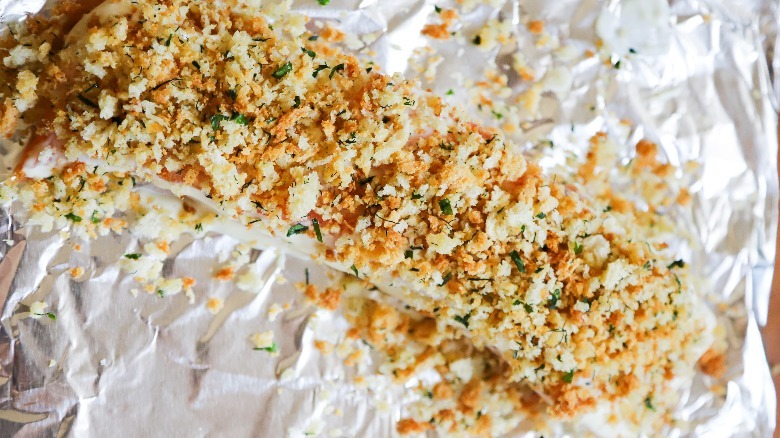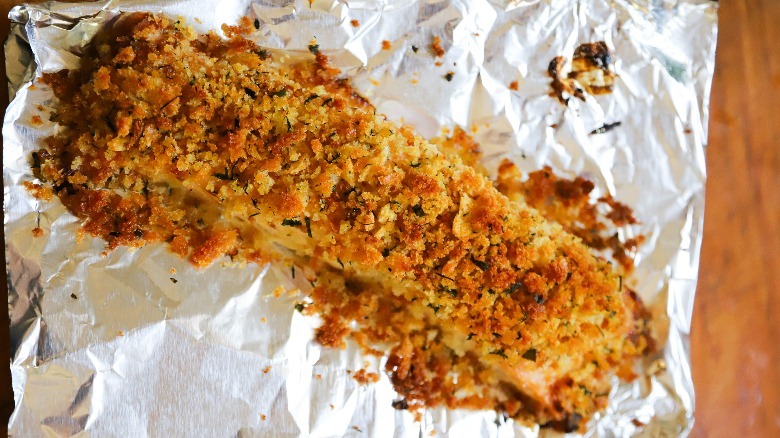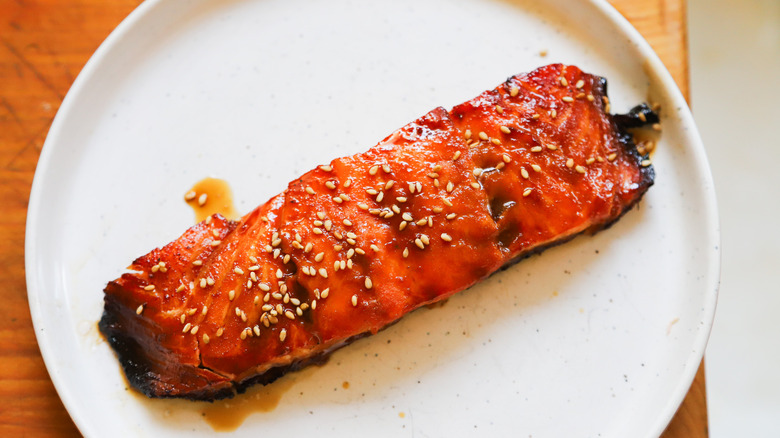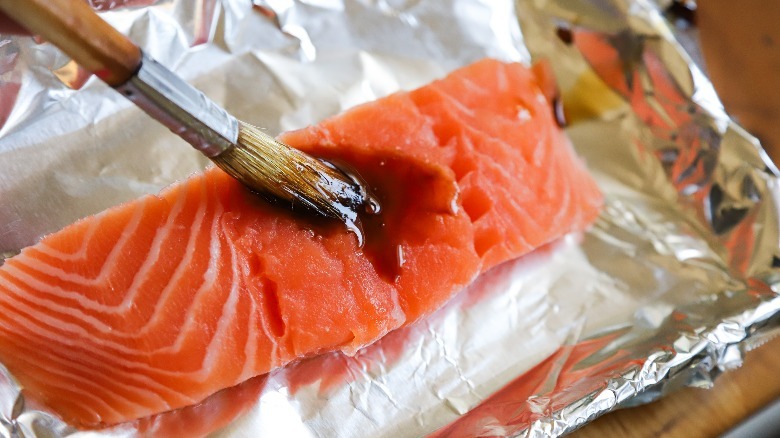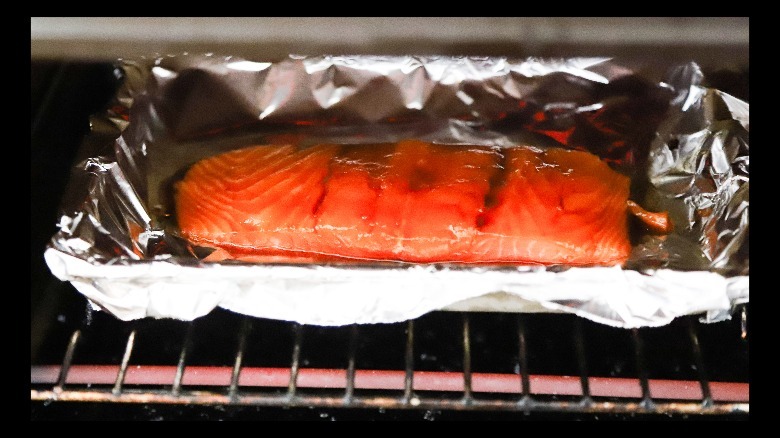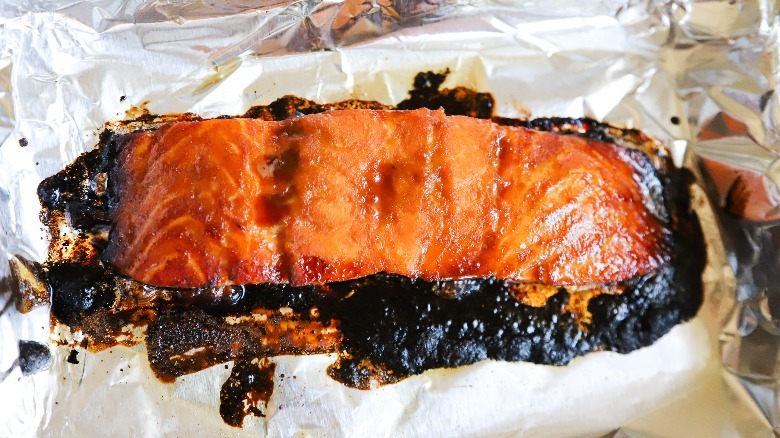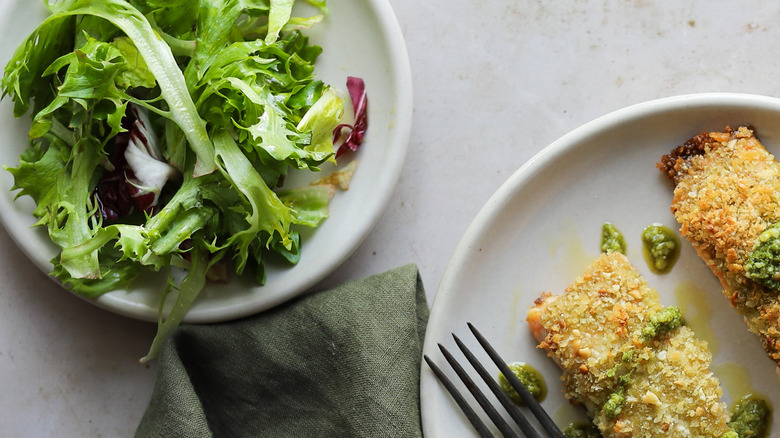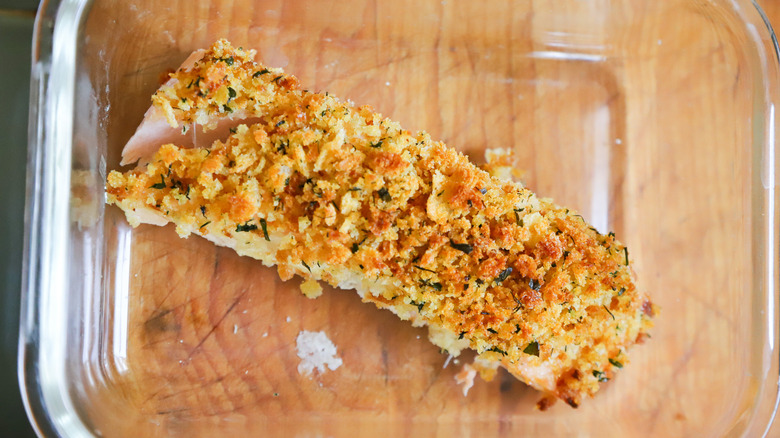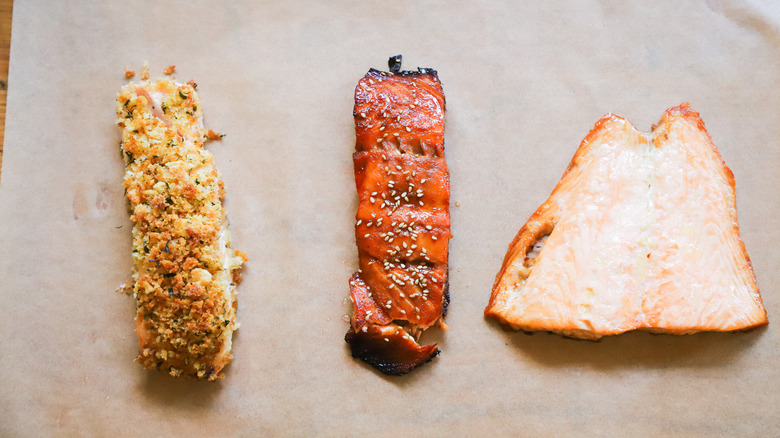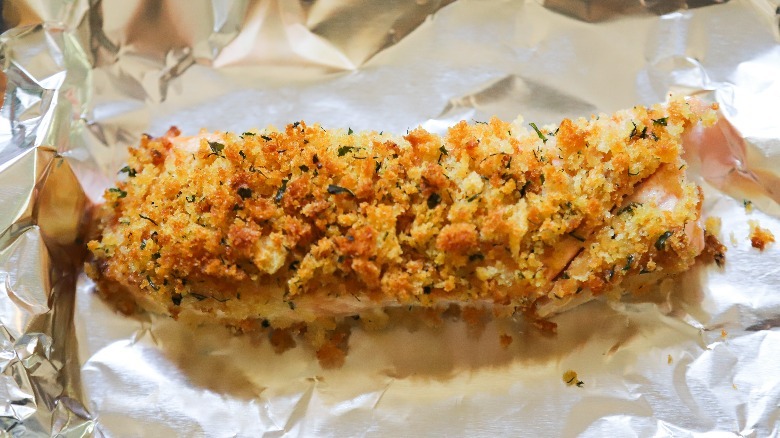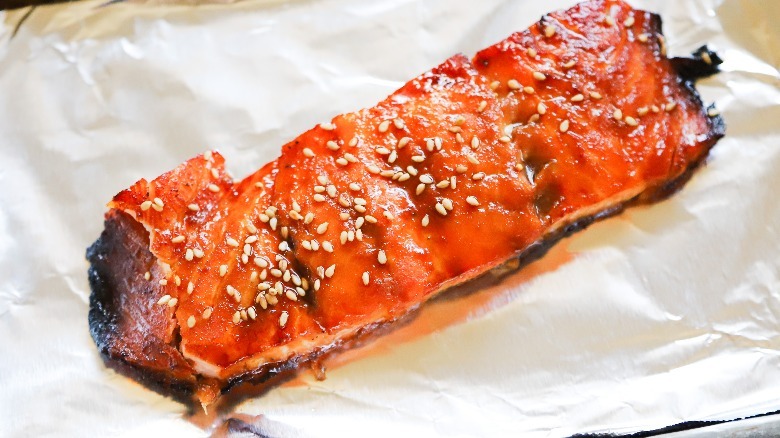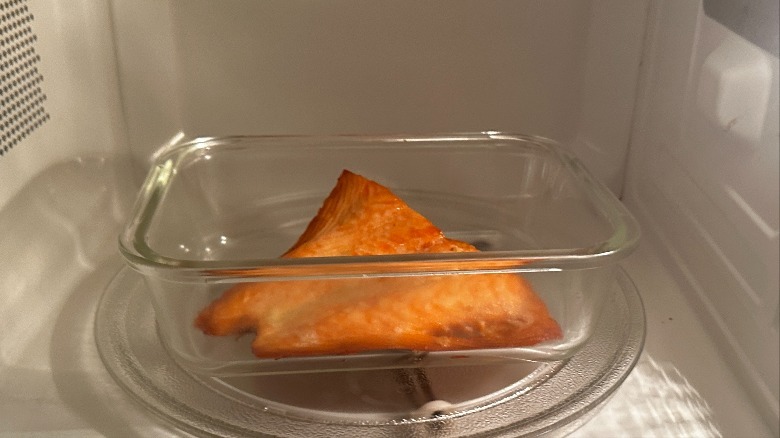How To Flawlessly Bake Salmon And Reheat The Leftovers
Grilling or pan searing salmon can have its challenges, including issues with overcooking and sticking to the pan or grill. Baked salmon, on the other hand, is a much more forgiving cooking method that is often lower in added fat. The problem with baking salmon is that it leaves a lot to be dsired visually. A white protein called albumin often appears on the surface of salmon that throws off the look, and it can be tricky to achieve the golden-brown caramelization that occurs with pan seared fish.
To get that flawlessly perfect baked salmon, there are a few key tricks. Here, we break down three options that can help you get that delicious, tender salmon in the oven without issue. Choose whichever method is right for you, from roasting and broiling the filets, to brushing with a tasty glaze, to topping with a crispy crust. So, next time you buy salmon at the grocery store, consider one of these options to bake it to perfection.
Method 1: Roast and broil
One of the simplest and most straightforward ways to bake salmon is to do a combination of roasting and broiling. Roasting cooks the salmon fast without drying it out and broiling helps coax caramelization out of the filet which will add flavor and a nice crisp texture on the edges.
First, heat your oven to 400 F.
Next, add olive oil to a sheet pan.
Place your salmon on the tray.
Season the salmon with salt (and whatever other seasonings you'd like to apply). Then, roast it until almost cooked through. This should take about 15 minutes.
Next, turn on the broiler, and broil your salmon for about 2-3 minutes longer. Once the salmon begins to cararmelize and the edges look crisp, you're ready to serve it up.
Method 2: Add a crispy crust then bake
Another way to bake salmon that tastes (and looks) great is to add a crispy coating. There are tons of ways to prepare salmon this way, from a simple Dijon-crusted salmon to a Mediterranean pesto-crusted salmon. The advantage of this method is that you can cook the salmon gently without drying it out, plus it has tons of texture from the crisp crumbs. If you want to make it without a true recipe, here's our favorite method.
Same as before, heat your oven to 400 F.
Next, prepare a simple sticking mixture, such as Dijonnaise. In this picture, we used 1 tablespoon mayonnaise, 1 teaspoon Dijon mustard, and 1 teaspoon lemon. Any kind of glaze or gooey mixture that you would use for breading could technically be used for this step.
Using a spoon or rubber spatula, spread the sticking mixture on the filet.
Coat the filet with breadcrumbs. This could be a store-bought seasoned breadcrumb mix or a homemade variety of your choice.
Bake until breadcrumbs are browned and salmon is cooked through, about 15 to 16 minutes. Let it rest for a few minutes and serve.
Method 3: Bake with a glaze
The third option for baking salmon in the oven is to utilize a glaze. A glaze is a sauce that has a sugar content on the higher side, using sugar, honey, agave, or even fruit juice to accomplish that. Sugar helps kickstart the Maillard browning process, which gives the salmon a wonderful texture and golden brown color. Baking salmon with a glaze shouldn't take much longer in the oven, so start checking it after about 15 minutes.
Once again, heat oven to 400 F. As the oven heats, brush your salmon filet with glaze.
Place the salmon in oven and bake for 15-16 minutes.
When the glaze has caramelized and the filet has reached an internal temp of 145 F, you're good to go. Remove it from the oven, let it rest for a few minutes, and serve.
What should you serve with salmon?
Salmon is a very versatile protein that can be served with a wide range of sides. For a plain piece of baked salmon, you could choose anything from potatoes to rice pilaf to grilled zucchini. A simple green salad, or a more ornate panzanella with green beans and tomato are equally excellent options. If you choose to bake your salmon filets with a glaze that has an Asian flavor profile, a warm bowl of steamed rice and some sauteed broccoli would complete the meal. You could also opt for a chilled noodle salad or some marinated cucumbers dressed with rice vinegar and toasted sesame seeds.
Crispy and crusted baked salmon, like the kind we detailed in this article, is on the rich side and pairs better more simple sides. Think roasted asparagus dressed in just olive oil and salt or a raw shaved carrot salad.
Storing your baked salmon
If you are going to the trouble to make perfect and flawless salmon, you might be considering making extra so you can enjoy it in the days to come as leftovers. To pull this off, you'll need to store the salmon the right way. The best way to store salmon is to place the filet in an airtight container and keep it in the refrigerator at 40 F or below (but above freezing). With this method, the salmon will be good to eat for up to three days.
Make sure to get the salmon into the refrigerator within two hours from the end of cooking. Any longer and the fish will be in the temperature danger zone too long and bacterial growth goes up exponentially. If you want to freeze cooked salmon, place it in tightly wrapped plastic wrap or in an airtight dish with as little air as possible to prevent freezer burn.
How should you reheat leftover salmon?
If you did store salmon to be eaten as leftovers, you might be wondering about the best way to reheat the salmon. In general, the best and easiest way to reheat salmon is to place the piece of salmon you want to reheat on a fresh piece of foil and bake it in the oven at a lower temperature than you cooked it. Heating the oven to 275 F is a good temperature that will heat the fish without overcooking it.
You can also use the microwave to reheat salmon, but be aware that this method can detrimentally affect the texture and will more than likely cause there to be hot spots in the fish. Heat covered in 30-second intervals until fish reaches desired temperature or doneness.
Whichever method you choose, always make sure the fish is reheated to an internal temperature of at least 145 F.
